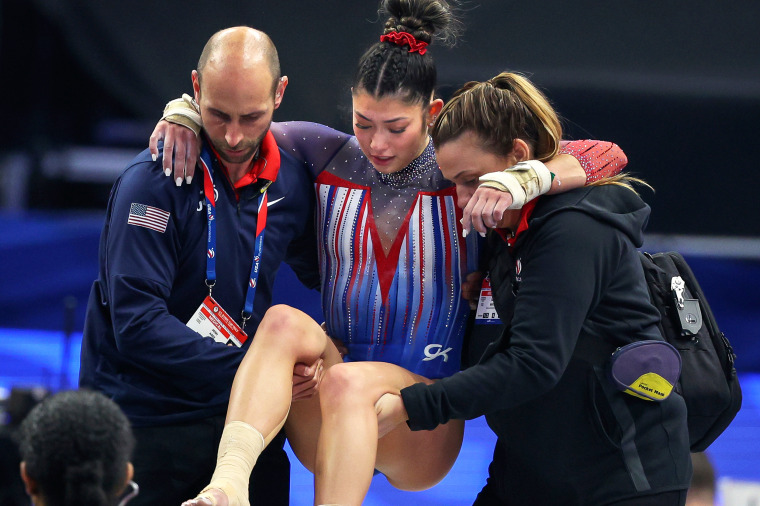CELEBRITIES
Achilles injuries ended Olympic dreams for two U.S. gymnastics contenders. Can they be prevented?

Kayla DiCello trained her entire life to make the U.S. women’s Olympic gymnastics team.
After she was named an alternate for the 2020 Tokyo Olympics, 2024 was shaping up to be her year. DiCello, a two-time world medalist, won the first meet of the season, the Winter Cup, and finished third in the all-around at the 2024 U.S. Championships.
In the opening routine of the U.S. Olympic Gymnastics Trials on June 27, she attempted a double-twisting Yurchenko vault she had performed thousands of times before. But instead of completing the two twists she was intending, she fell to the floor after she hit the mat. DiCello looked up at her coach and shook her head with tears in her eyes.
DiCello, 20, had ruptured an Achilles tendon and was taken off the competition floor in a wheelchair, her Olympic dream on hold once again.
She was the third top contender for the five-member Paris Olympic team to sustain a season-ending injury at the trials in Minneapolis, and hers was the second Achilles injury of the week.
Skye Blakely, who was the runner-up to Simone Biles at the U.S. Championships, also ruptured an Achilles last week while she was training a tumbling pass on the floor exercise.
Dr. Michael Canales, a foot and ankle surgeon who specializes in Achilles injuries in gymnastics, was not shocked by the slew of injuries at the trials.
“Emphasizing difficulty and amplifying training demands creates a recipe for disaster,” said Canales, who is a former NCAA gymnast himself. “When these factors are coupled with the heightened demands of an Olympic year, the outcome is unsurprising.”
The typical recovery period after an Achilles tendon repair operation is six to 12 months. It involves immobilization, physical therapy and a gradual return to dynamic and high-impact activities.
Even after gymnasts return to the sport, they face a higher risk of rupturing the Achilles tendons on their opposite legs, Canales said.
The ultimate goal, he said, is to implement preventive measures in the sport that could prevent injuries in the first place.
Canales described the current protocols as inconsistent and “arbitrary,” calling for more formulaic guidelines across the sport, rather than a reliance on decisions by individual athletes, coaches and parents.
“While this is not the result I envisioned, there’s so much to be proud of,” DiCello said Saturday on Instagram. “Years of tireless work and dedication in the gym with the dream of representing my country once more at the Olympic Games. Pushing myself to go after new skills, new dreams.”












